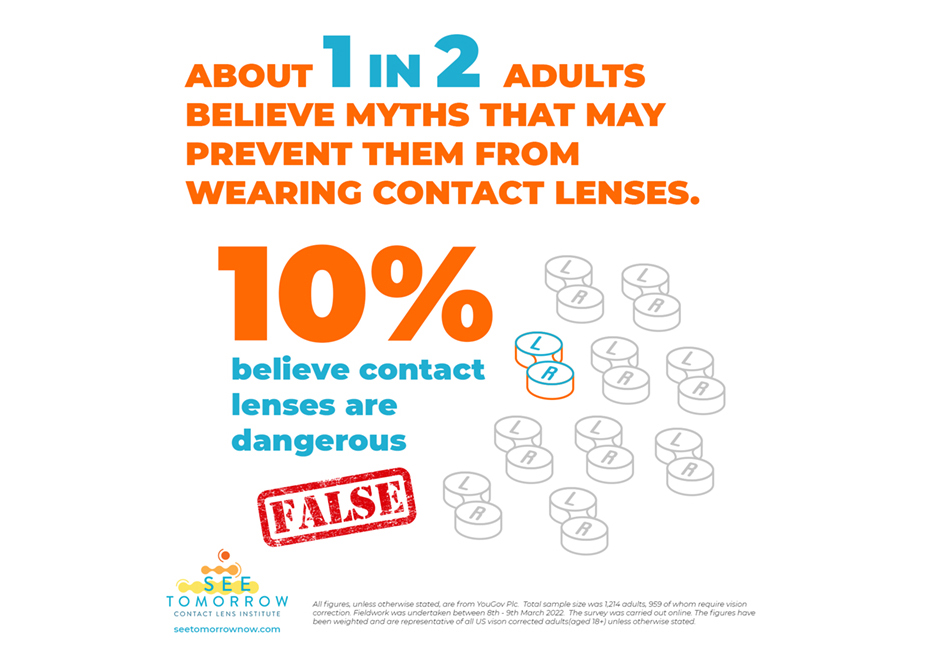New research commissioned by the Contact Lens Institute (CLI) reveals that U.S. eye care practitioners are missing an opportunity to talk about contact lens options with two out of three patients, among other eye-popping findings. The nationwide survey of nearly 1,000 U.S. adults who require vision correction is part of the organization’s See Tomorrow initiative, which is designed to help practices understand and thrive as consumer beliefs and behaviors evolve. Here are some key findings from the survey.
• When asked about their two most recent practice visits, only a fraction of adults remembered contact lenses being discussed as an occasional alternative for glasses (11 percent), a replacement for glasses (8 percent) or to replace reading glasses (4 percent). Despite widespread attention about the issue in the past two years, just 6 percent recall their practitioner having talked about contact lenses to eliminate fogging. And a meager 7 percent remembered being told about new advancements in contact lenses. 66 percent stated that none of these opportunities were raised.
• About one in two Americans aren’t necessarily aware that contact lenses can be different from each other—a recipe for unadvisable switching. Nearly half aren’t sure if all contact lens brands are essentially the same (44 percent) or if it’s ok to swap their prescribed brand for another (47 percent). Another 57 percent aren't sure if all contact lenses are made from the same type of plastic and 46 percent don’t know if they all use the same general design.
• Misinformation may affect consumer contact lens purchasing decisions, placing their eye health and vision at risk. False beliefs may lead to patient-initiated brand swaps, as approximately one in five adults definitively stated that contact lens brands are interchangeable. The CLI research also showed that about three out of five adults may not check with their eye doctor before switching brands.
• Urban legends can also be an issue, with about one in two adults who require vision correction believing myths that may prevent them from wearing contact lenses. This includes 10 percent who stated that contact lenses are dangerous. Another 11 percent believe contact lenses can permanently stick to the eye and 14 percent think contact lenses can get lost behind the eye.
• The doctor-patient relationship is essential to healthy contact lens wear and a healthy contact lens practice. The CLI findings show that nearly seven out of 10 (68 percent) of people turn to their eye doctor for contact lens information.
• Practitioners can strengthen connections by being a source for eye health facts, directly with patients and through supplemental means. Approximately three in five adults (60 percent) also seek out alternate information sources for contact lens wear—including friends and online searches. People ages 18-34 are three times more likely to rely on social media for information about contact lens wear versus the total population, highlighting why a social presence is more crucial than ever for practices.
On May 3, four leading optometrists—all 2022 CLI Visionaries—will discuss the new data, divulge additional findings, make peer recommendations, and take questions during two online learning events. Revealed! New Consumer Data Shows What's Holding Back Your Contact Lens Practice will be offered as live webinars at 6 pm EST and 9 pm EST. Free registration is available for the earlier session at https://bit.ly/Revealed-EastCoast and the later session at https://bit.ly/Revealed-WestCoast.
 |













